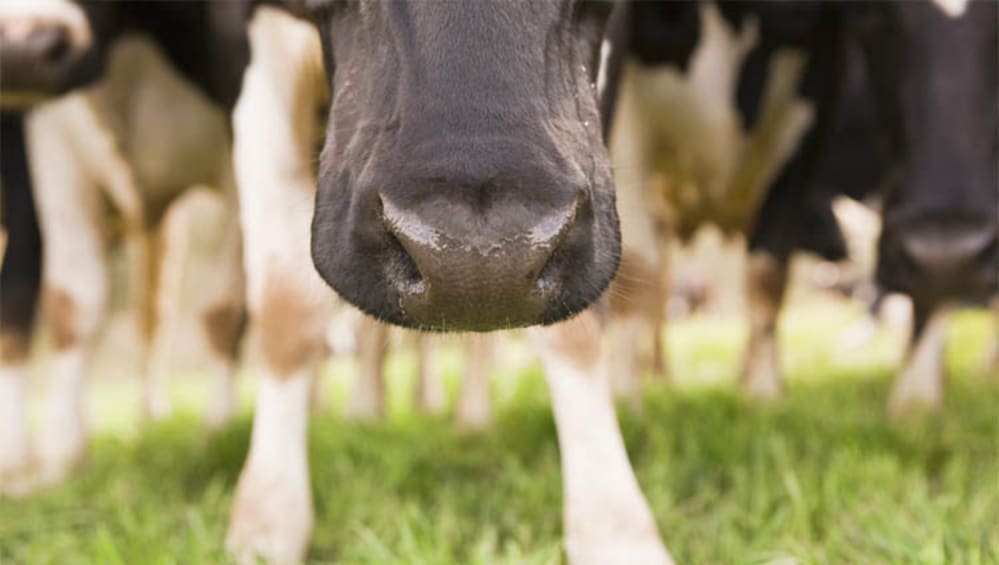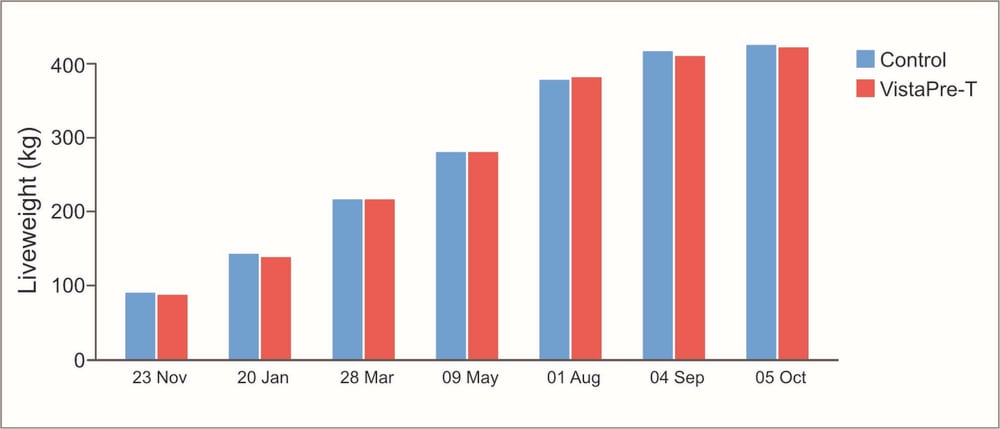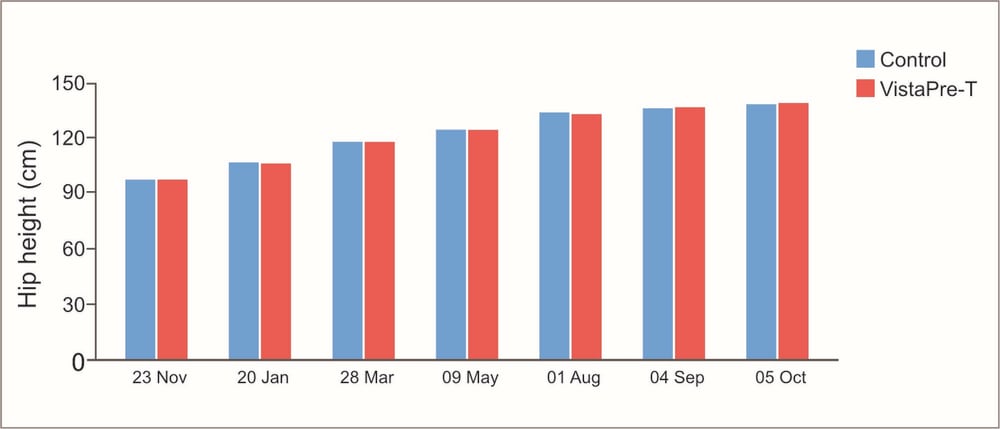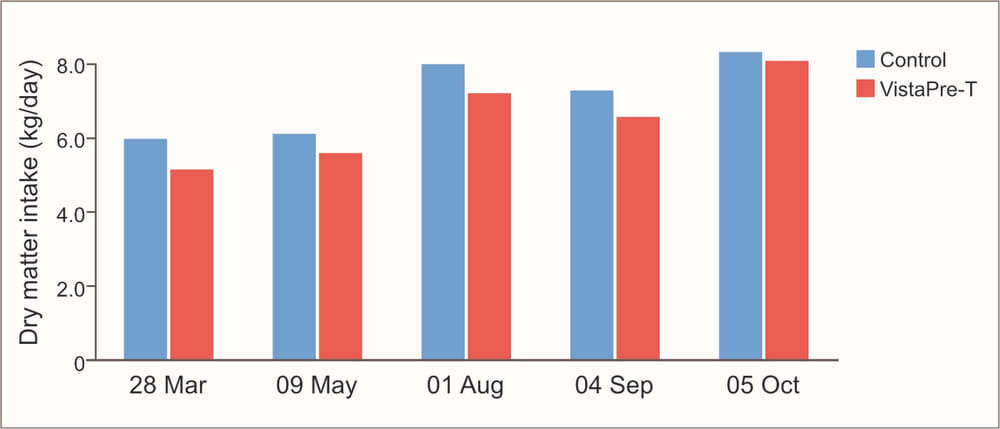Improve ration digestibility for lower heifer feed costs and higher lactation performance
Published Tuesday, 25th June 2019Our EMEA Ruminant Technical Director Dr Derek McIlmoyle explains that trials showing the effect of ration digestibility on heifer feed intakes and performance highlight the potential to improve margins
It’s widely recognised that reducing age at first calving to 24 months can have a positive impact on milk yields, fertility and lifetime performance. Yet the role that improved ration digestibility can play in achieving this – and reducing overall feed costs – is often overlooked, as Dr McIlmoyle explains.
“A recent farm-scale research trial in the United States (US) found that increasing ration digestibility allowed heifers to reach the same pre-service weight in the same number of days, but consuming at least 113 kg/head less feed,” he says.
“Given that rearing replacement heifers has been estimated to account for 20% of total dairy unit running expenses, and that feed is responsible for half this cost, the impact on overall profitability can be considerable.”
Successful heifer growth
From weaning at around 100 kg LW, typical Holstein heifers need to reach 360–410 kg LW by service (13–15 months) if they’re to calve at the target 85% of mature liveweight (540 kg LW) at around 24 months of age. That’s an average liveweight gain (LWG) of around 0.75 kg/day from weaning to service, and 0.5 kg/day from service to calving.
“The challenge for many dairy units is how to achieve 85% of mature liveweight by 24 months of age,” Dr McIlmoyle continues. “Consistently achieving the target growth rates throughout that time is critical.
“What’s needed is fast, efficient growth that builds frame size without excess fat deposition, and that has to be the priority.”
Not only are well-grown heifers more capable of the necessary high levels of feed intake once in the herd, they can also more effectively compete physically with older cows. And reducing the age at which this is achieved has considerable benefits in terms of costs, lactation performance and longevity.
“Entering the herd at a younger age decreases both rearing costs and the number of unproductive days before milk production begins,” states Dr McIlmoyle. “According to a 2017 study by the Royal Veterinary College, calving at 26 months instead of 30 months, for example, can lower total rearing costs as much as 25%, despite it only being a 13% reduction in terms of days.”
Trials have also shown that calving at older than 26 months can reduce daily milk yield by up to 2.4 kg/day and cut first service conception rates by as much as one third (45% versus 64%). Additional downsides include increased somatic cell counts once in the herd, and reduced likelihood that heifers will reach their second lactation without being culled.
“Published figures suggest that the average age at first calving in the UK is around 29 months. So anything that helps to bring this figure down is definitely worth considering, particularly if it can cut feed costs as well,” Dr McIlmoyle adds.
Farm trial results
The US farm trial, carried out on a high-performing 8,000-cow dairy unit in central California, ran for 45 weeks (10.4 months) and involved 330 Holstein heifers reared from 70 to 386 days of age. Calves entered the trial at weaning, at which point they were housed in 14-head covered pens, moving to 84-head outdoor pens at 128 days of age.
“Following weaning, all the calves received the same starter ration for the first ten days of the trial, then moved onto a high-grain total mixed ration (TMR) that was reformulated to increase forage levels after 37 weeks, and again after 41 weeks,” Dr McIlmoyle outlines.
“For half the calves, however, the digestibility of the TMR was increased by application of a forage pre-treatment (VistaPre-T) prior to feeding. Liveweight and hip height were recorded periodically throughout the trial period, with feed intake monitored from week 16 of the trial onwards.”
a) liveweight
b) hip height
Figure 1 - Trial data showing matching heifer performance across both treatments
Both LW and hip height were similar throughout the trial (figure 1), with heifers reaching the same overall size by the end of the 45 weeks. However, dry matter intakes for those receiving the improved digestibility ration pre-treated with VistaPre-T were consistently lower (figure 2).
Figure 2 - Comparison of heifer feed intake with or without VistaPre-T pre-treatment
“The overall result was that over the 29 weeks during which feed intake was measured, 113 kg/head less feed was needed to achieve the same weight and size,” Dr McIlmoyle adds. “Calculations done at the time showed that this added up to a saving equivalent to around £18/head.
“VistaPre-T pre-treatment works by roughening the surface of the fibre, increasing the rate of microbial colonisation – and forage digestibility – once in the rumen. With a cost for pre-treatment of just £6/head, the net result was a reduction in overall feed costs in the region of £1,200 for every 100 heifers reared.”
First lactation benefits
The benefits of improving ration digestibility extend beyond calving. In a three-month ADAS-monitored trial on a commercial UK dairy unit, an increase in TMR D-value from 63 to 65% (again achieved by forage pre-treatment with VistaPre-T) raised average dry matter intake (DMI) across 50 first lactation heifers by 2 kg/day, resulting in a 0.6 litre/day lift in average milk yield (28.2 vs. 27.6 litres/day).
Greatest gains were seen from day 68 to 84 of the trial, when the average milk yield improvement rose to 1.4 litres/day. And across the three-month trial, overall gain for the 50 heifers was 2,520 litres – equating to an additional income of £730 (at 29ppl).
“Improving fibre digestibility can increase both the amount of energy released from the ration and the rate at which feed passes through the rumen,” states Dr McIlmoyle. “This can have a big impact on yield potential and ration costs, particularly at higher yield levels, in early lactation and for young heifers – all situations where feed intake is a major factor limiting performance.
“Gaining more from the forage also allows the level of costly, high-starch concentrates to be reduced for the same level of performance. The subsequent improvement in the ratio between fibre and starch in the ration reduces acidosis and benefits milk fat production.”
First lactation heifers are particularly at risk of impaired digestion, with studies having shown that bullying can result in heifers ruminating up to 40% less than older cows. With rumination critical to the digestion of fibre (and rumen passage rates), the impact on performance can be dramatic.
“The management and feeding of replacement heifers need to be a priority right through until they reach full adult size, which typically doesn’t occur until the third lactation,” emphasises Dr McIlmoyle. “Rations that support more efficient growth – and performance post-calving – are critical, and improving those rations by increasing ration digestibility is one of the most cost-effective ways to achieve this.”
Latest news
Stay ahead with the latest news, ideas and events.

Online Feed Fibre Calculator
Calculate the percentage of dietary fibre in your feed
Our calculator is designed for nutritionists and uses averages of global raw materials to calculate the dietary fibre content (plus other more in-depth fibre parameters) of finished animal feed. These parameters are available within AB Vista’s Dietary Fibre analysis service (part of our NIR service).
Sign up for AB Vista news
A regular summary of our key stories sent straight to your inbox.
SUBSCRIBE© AB Vista. All rights reserved 2025
Website T&Cs Privacy & Cookie Policy Terms & Conditions of Sale University IDC policy Speak Up Policy




























